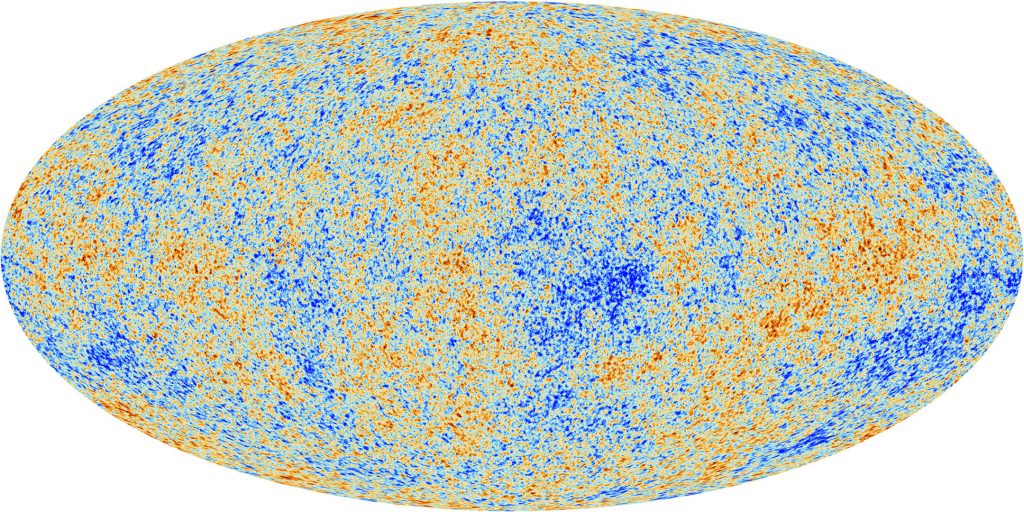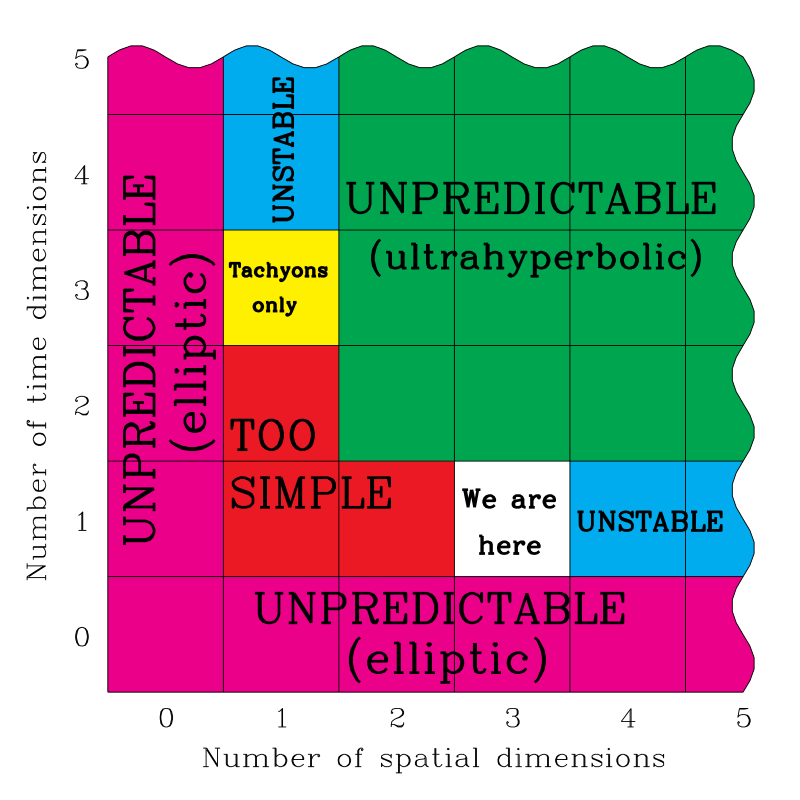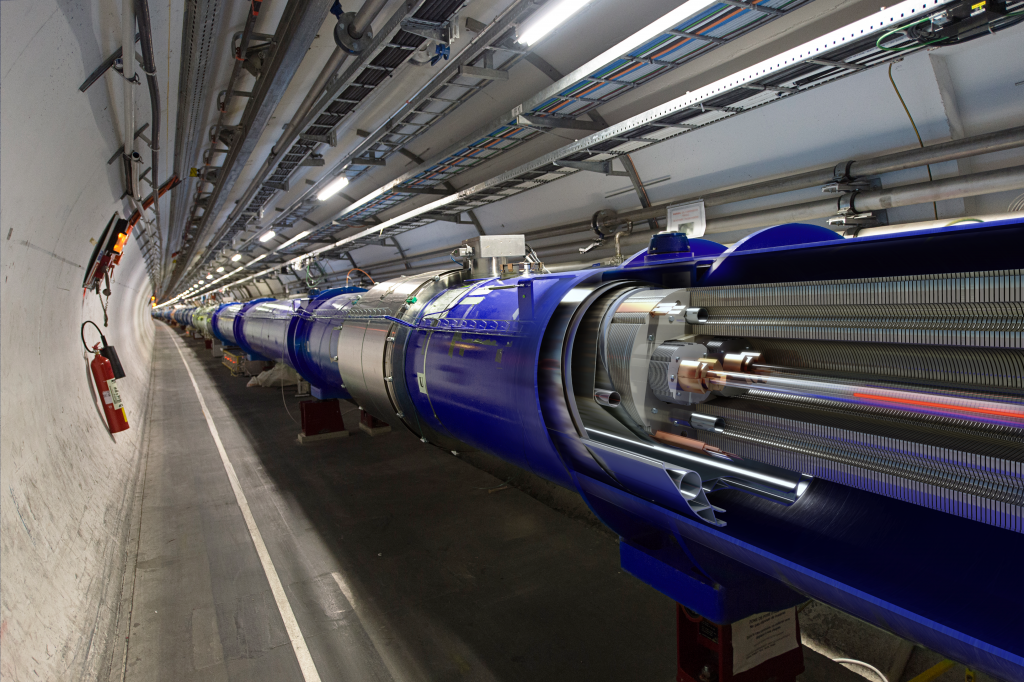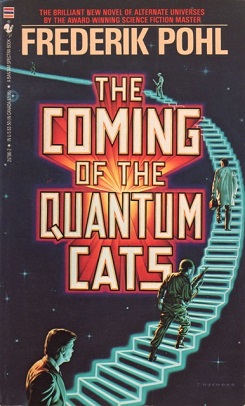Multiverses, or multiple universes, have been mulled over by philosophers and thinkers for millennia.
Today, however, this heady concept is discussed more than ever, partly because of research by cosmologists such as Lord Rees of the University of Cambridge, one of the many scientists who study the nature and origin of the universe, and partly because of science fiction, notably the ever-expanding Marvel cinematic universe.
Marvel movies such as Loki, Spider-Man: No Way Home, and Doctor Strange in the Multiverse of Madness have dealt heavily with the multiverse, which also gets a fleeting reference in the trailer for the latest release, Thor: Love and Thunder.
However, this cosmic concept can be glimpsed much earlier, according to the curator of our forthcoming Science Fiction exhibition, Glyn Morgan: “Science fiction has a long history of multiverses which dates to at least 1934’s Sidewise in Time, but arguably even back to the early alternate histories of the early 19th century and, more tenuously, even earlier than that.”
COSMIC INFLATION
Four decades ago, the idea of the multiverse also took root in cosmology, in the wake of efforts to make sense of observations of how the universe appears very uniform on the largest scales that are accessible to our telescopes.
The best theoretical explanation of this uniformity is provided by ‘inflationary theory’, developed in the late 1970s and early 1980s by Alexei Starobinsky in Moscow and Alan Guth, then at Stanford University.

Inflation says that, instead of an expanding ball of matter, energy, space and time that started with the Big Bang, the early universe exploded into being faster than the speed of light from a size smaller than that of a subatomic particle.
Like a vast sheet snapped tight, this flattened out the visible universe from a fraction of a second after the Big Bang so that everything looks relatively uniform in all directions.
The idea of inflation in turn gave birth to that of the multiverse, that our universe is just one of many, after research in the 1980s by Andre Linde, a professor of physics at Stanford University in California, based on assumptions about the inflationary universe.
Linde‘s ‘eternal chaotic inflation’ theory of 1986 argues ‘the universe consists of an exponentially large number of different mini-universes inside.’
Instead of being a single spherically symmetric expanding balloon-like structure, our universe may look like a “multiverse”, a cosmic froth of many different exponentially large bubbles (“universes”) with different laws of physics operating in each one.
Some parts of the multiverse may halt their expansion and contract but there are always parts that are still inflating, with universes like ours eternally being produced. As a consequence, our universe is necessarily one of a vast number, each of which is constantly and randomly spawning new universes in an unending chain of cosmic creation.
THE ANTHROPIC PRINCIPLE
The multiverse is a fecund idea that may also shed light on why our cosmos appears to have been tuned to foster intelligent life, according to a study by the Astronomer Royal, Lord Rees – in a paper with Mario Livio of the University of Nevada, Las Vegas – which is also explored his books, Our Cosmic Habitat and Just Six Numbers.
While the multiverse of cinematic science fiction plays with speculative ‘what if’ scenarios that revolve around a character such as Spiderman, scientists examine the cosmic implications for the whole universe, asking if there is just one Big Bang, for example.

If there was not one solitary Big Bang, they then ask a second question: are these Big Bangs all governed by the same physical laws, or would they be governed by different physics? The latter is suggested by various versions of ‘string theory’, one that attempts to grapple with fundamental issues of physics in which all matter consists of tiny, vibrating “stringlike” entities.
Take, for example, the strength of gravity: ‘Gravity has to be weak,” says Lord Rees, “otherwise biological objects like us, that are big enough to evolve complex structure, would be crushed by gravity. “
But gravity does not have to be fine-tuned: “indeed, things might be even better if gravity were 100 times weaker”, he added. “You get a universe where the stars lasted 100 times longer and the 1000 times bigger, far more powers of 10 between the micro and the cosmic scale and far more time for complexity to emerge.”
Fluctuations in the baby universe spawned galaxies and other structures but, he adds, if the early cosmos was much smoother, it would now still be just cold neutral hydrogen, with no stars and no people. On the other hand, “if the initial fluctuations had much bigger amplitude, the outcome would be a universe inhabited by monster galaxies and black holes.”
Within the multiverse framework, complex entities like humans could only have evolved in a habitable subset of universes – where gravity is weak, and where the laws of microphysics allow complex nuclei, and therefore a periodic table of chemical elements, to exist. If there are vast numbers of universes, embodying all the possible laws of physics, we measure the values we do because that’s where our universe lies on the landscape of possibilities.

Livio and Lord Rees conclude, “If we indeed inhabit a multiverse, then we may have to accept that there can be no explanation other than anthropic reasoning for some features of our world.” This is known as the Anthropic Principle.
Lord Rees adds that, because organic life is somewhat fragile, most intelligent life in the multiverse will not be like us but is more likely to be machines. Indeed, he suspects that future post-human evolution will not be Darwinian but will involve ‘secular intelligent design’ of ever more capable and smarter machines.
SEEKING THE MULTIVERSE
One of the complaints about the multiverse is the lack of evidence of the laws that prevailed under the extreme conditions of the ultra-early universe. Cosmologists need a theory that makes testable predictions about the physics of our present world, or direct evidence of the ultra-early eras.
In 2014, there was huge excitement over results from a sensitive microwave telescope near the South Pole which were hailed as proof of inflationary theory and the multiverse. Since then, the study has been dismissed as flawed.

Although the concept of a multiverse remains speculative, Lord Rees argues that attempts to determine whether it exists constitute “a genuinely scientific question”.
“About ten years ago I was on a panel at Stanford University where we were asked how much we’d bet on the multiverse concept,” he recalls. “I said that on the scale ‘would you bet your goldfish, your dog, or your life’ I was nearly at the dog level. Andrei Linde, who had spent 25 years promoting ‘eternal inflation’ said he’d almost bet his life. Later, on being told this, the physics Nobelist Steven Weinberg said he’d happily bet Martin Rees’s dog and Andrei Linde’s life”.
Lord Rees says that the multiverse will remain speculative until we have a theory that can describe the physics under the extreme conditions near the start of the Big Bang.
By ‘near the start’ he means when the universe was much less than a second old. “We have very good evidence that The Big Bang Theory is correct at one second, from the proportions of the light elements helium and deuterium”.
Because the Large Hadron Collider, the world’s most powerful particle accelerator, based near Geneva, can reproduce the energies in the universe at around one billionth of a second old, when the observable universe was around the size of the Solar System, cosmologists are confident about that earlier era too. “But before that, all bets are off,” he says.

Lord Rees says scientists need a theory that works at one to the power of minus 36 seconds after the Big Bang, when the universe was around the size of a tennis ball, around the time the force of gravity separated from the other fundamental forces (which remain unified), and the earliest elementary particles (and antiparticles) were created.
A leading candidate is string theory, which also requires there to be more spatial dimensions than the three we are familiar with.
Stephen Hawking, whose office can be seen in the Science Museum, and many others have sought to create a grander theory that blended theories of the very big, general relativity, and very small, quantum mechanics but, says Lord Rees, they operate even earlier, before the so-called Planck time, which is about 10 to the power of minus 44 seconds.
“This is not metaphysics but speculative science, but it will remain speculative until we have a theory which we believe correctly describes the extreme conditions under which inflation and such like happen, and that theory is validated because it predicts things we can test.”
“Andrei Linde, my dog, and I will all be dead before this is settled,” he adds. “But it’s exciting science. And it may be true”.
TRAVEL IN THE MULTIVERSE
If this does turn out to be true, there is one last hurdle to overcome: is it possible to move from one universe to another in the multiverse, as effortlessly as is suggested in the 2022 multiverse caper Everything Everywhere All at Once?

Lord Rees points out that wormholes, tunnels in curved space-time, can connect two distant places or times. The Australian physicist Brandon Carter, who also formulated the Anthropic Principle,” showed in the 1960s that “two large ‘closed universes’ can be patched together so that each looks like a small black hole when viewed from the other”. This could – in principle – allow movement between universes.
The idea dates back more than a century, though the contemporary scientist who is best known for using wormholes to bridge the imaginative worlds of science and fiction is the Nobel prizewinner, Kip Thorne, who was the executive producer of the movie Interstellar.
MANY WORLDS
The concept of the multiverse is often conflated with another scientific idea that dates back even further, to 1957, from the controversial ‘many worlds’ interpretation of quantum mechanics.
According to this interpretation, the cosmos constantly divides into parallel universes in which every conceivable outcome of every event happens somewhere. “The Many Worlds interpretation is very influential in science fiction. I’m a particular lover of Frederick Pohl’s The Coming of the Quantum Cats (1986) which is pretty ridiculous but fun interpretation,’ comments Glyn Morgan.

There are ways to reconcile the science of parallel worlds with the multiverse, suggesting that two of the most bizarre ideas of modern physics, and among the most inspirational to science fiction, could be different sides of the same coin.
However, Lord Rees comments that the ‘many worlds’ interpretation can apply, even without the multiverse. “It is an alternative interpretation of quantum mechanics that is not yet testable but is really separate from the multiverse and issues that are crucial in cosmology in the early universe.”
Science Fiction: Voyage to the Edge of Imagination is open at the Science Museum until 20 August 2023. Book your tickets now
